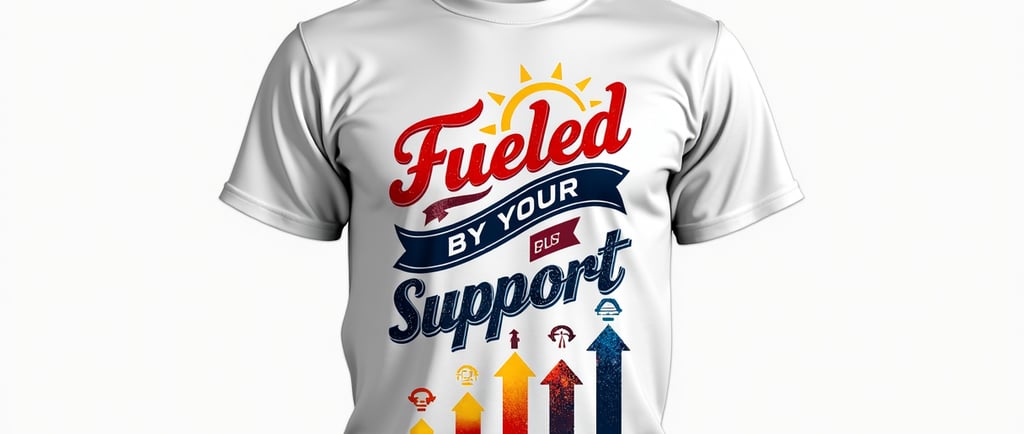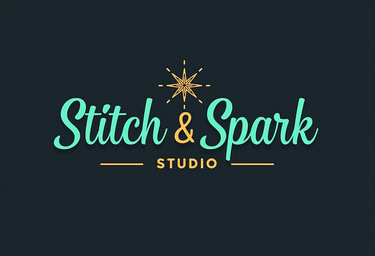How to Design Vibrant DTF Prints for Your Next Fundraiser
Fundraisers are a fantastic way to rally community support while boosting awareness for a cause or a project. One of the most effective ways to promote your event is through eye-catching printed materials,...
7/3/20254 min read


How to Design Vibrant DTF Prints for Your Next Fundraiser
Fundraisers are a fantastic way to rally community support while boosting awareness for a cause or a project. One of the most effective ways to promote your event is through eye-catching printed materials, and Direct to Film (DTF) printing offers a vibrant and durable option for t-shirts, tote bags, and other merchandise. If you’re looking to create unique DTF prints that captivate your audience, this blog post provides you with essential tips and tricks to make your designs stand out.
Understanding DTF Printing
Before diving into the design process, it’s important to grasp how DTF printing works. DTF printing involves printing designs onto a special film, which is then transferred onto fabric using heat. This method allows for high-quality imagery with a vibrant color palette, fine details, and impressive durability against washing and wear. Understanding these advantages will help you leverage DTF printing to your advantage in fundraising.
1. Choose a Theme That Resonates
The first step in creating compelling DTF prints is to select a theme that aligns with your fundraiser's mission. Your design should reflect the cause you're supporting, whether it’s a charity, school, sports team, or community project.
- Research Your Audience: Understand who will be participating in the fundraiser and design prints that resonate with them emotionally.
- Storytelling Through Design: Incorporate elements that tell a story related to your cause. Visuals that evoke emotions or convey a message tend to engage more effectively.
2. Utilize Bold Colors and Designs
Colors are crucial when it comes to grabbing attention. For DTF printing, consider using bold and vibrant colors that will stand out on various fabric backgrounds. Here are some tips for color selection:
- Color Psychology: Choose colors that evoke the emotions you want associated with your event. For example, blue often signifies trust, while red can evoke passion.
- Contrast and Harmony: Use contrasting colors to make your prints more visually engaging. Incorporating complementary colors can create balance in your design.
3. Incorporate High-Quality Visuals
The quality of the visuals plays a significant role in the overall impact of your DTF prints. Here are some pointers:
- Start with High-Resolution Images: Ensure your images are at least 300 DPI for the best results. Low-resolution images will appear pixelated and unprofessional.
- Vector Graphics: Whenever possible, use vector graphics, as they can be scaled without losing quality, ensuring your design looks sharp and vibrant.
- Add Depth with Textures: Consider incorporating textures into your design for added visual interest without overwhelming the overall look.
4. Typography Matters
Your choice of fonts can significantly affect your design. Typography should be clear and readable while reflecting the personality of your fundraiser.
- Limit Your Fonts: Stick to two to three fonts at most to maintain cohesion. Use one for headlines and another for body text.
- Hierarchy of Information: Use size and style variations to create a visual hierarchy in your text, ensuring that the most critical information stands out.
5. Include Engaging Graphics
Beyond text, graphics can enhance your designs. Consider the following:
- Logos and Icons: Incorporate your organization’s logo or relevant icons that resonate with the event.
- Illustrations: Hand-drawn or vector illustrations can add a personal touch. Unique graphics can convey themes or messages creatively.
6. Design for the Fabric
Remember that DTF prints will go on various fabrics. Different materials and colors can affect the final appearance of your designs:
- Fabric Colors: Test how your colors will look on the actual fabric you plan to use. Lighter colors often allow better vibrancy, while darker fabrics may require a different color strategy.
- Fabric Types: Consider how the fabric texture will interact with your prints. For example, smooth fabrics may show off intricate designs better than textured fabrics.
7. Mockup and Feedback
Creating digital mockups of your designs is essential:
- Use Mockup Tools: Utilize design software or online tools to create a digital representation of how your print will look on the garment.
- Gather Feedback: Share the mockups with a small group of people to get feedback. Different perspectives can help you identify areas of improvement before finalizing your design.
8. Test and Finalize Your Design
Before proceeding to print, ensure that everything is perfect:
- Print Test Samples: Order a small batch of test prints to evaluate colors, design placement, and fabric compatibility.
- Adjust Based on Feedback: Be open to making adjustments based on how the test prints turn out. Sometimes small tweaks can make a big difference.
9. Promote Your Fundraiser with Your DTF Prints
Once your DTF prints are ready, think about how to maximize their potential in promoting your fundraiser:
- Social Media Campaigns: Share images of your prints on social media to create buzz around your event. Encourage participants to post and share pictures of themselves wearing your merchandise.
- Engagement Strategies: Offer incentives, such as discounts for early purchases or contests for the best photos in your merchandise. Create a sense of community around wearing your prints.
10. Reassess and Learn
After the fundraiser, take the time to evaluate your designs and their effectiveness:
- What Worked and What Didn’t: Gather feedback from participants regarding their likes and dislikes about the designs.
- Analyze Sales: Understand which designs were the most popular and why. Use this information for future print designs.
Conclusion
Designing vibrant DTF prints for your next fundraiser can significantly enhance your event's visibility and appeal. By focusing on themes that resonate, utilizing bold colors and high-quality visuals, considering typography, and promoting effectively, you can create prints that not only represent your cause but also engage your community. Remember to test and gather feedback, as continuous improvement is key to successful future fundraisers. Good luck with your design process and have a successful fundraiser!
